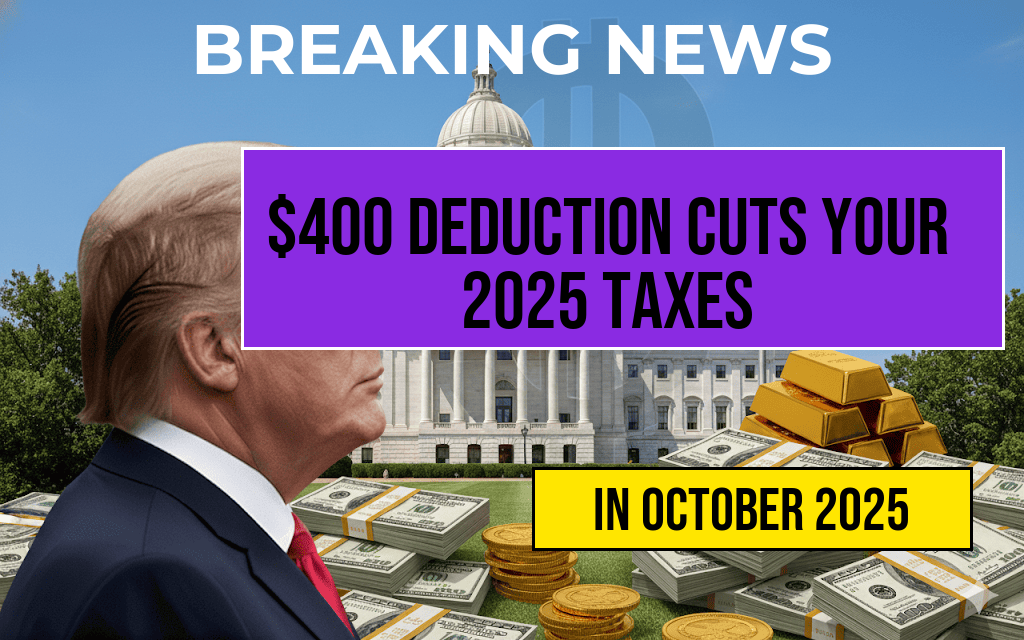Starting in the 2025 tax year, American taxpayers will see a notable change in their standard deduction, thanks to an additional $400 increase for individual filers and $800 for married couples filing jointly. This adjustment aims to simplify the tax filing process and provide relief to millions by lowering taxable income thresholds. For many households, this means a tangible reduction in their overall tax bill, especially for those who typically claim the standard deduction rather than itemizing deductions. Understanding how this increase interacts with existing tax laws can help taxpayers better plan for the upcoming filing season, potentially saving hundreds of dollars. This article explores the mechanics behind the additional deduction, its impact on different income brackets, and what taxpayers should consider when preparing for 2025 taxes.
What is the Standard Deduction and How Will It Change?
The standard deduction is a set amount that reduces taxable income for taxpayers who do not itemize deductions. For the 2025 tax year, the IRS has announced an increase of $400 for individual filers and $800 for married couples filing jointly. Historically, the standard deduction has been adjusted annually for inflation, but the 2025 increase reflects a targeted effort to provide additional tax relief amidst economic shifts.
| Filing Status | 2024 Standard Deduction | 2025 Standard Deduction | Increase |
|---|---|---|---|
| Single | $14,800 | $15,200 | $400 |
| Married Filing Jointly | $29,600 | $30,400 | $800 |
| Head of Household | $22,400 | $22,800 | $400 |
How the Additional Deduction Reduces Tax Liability
The primary benefit of a higher standard deduction is the reduction of taxable income. For example, a single filer with $50,000 in income who claims the 2024 standard deduction of $14,800 would report $35,200 as taxable income. Increasing the deduction to $15,200 in 2025 diminishes taxable income to $34,800, effectively lowering the amount of income subject to federal taxes. This decrease can lead to a lower tax bracket placement, which can reduce overall tax owed.
For taxpayers who typically take the standard deduction, this change can translate directly into dollars saved—sometimes hundreds of dollars—particularly for those near the thresholds of higher tax brackets. It also simplifies tax preparation, as fewer taxpayers need to itemize deductions, which often involves gathering extensive documentation.
Impact on Different Income Groups
- Lower-income households: Most benefit from a higher standard deduction, as they are more likely to claim the standard rather than itemize. This change can make a noticeable difference in their net tax bill.
- Middle-income taxpayers: Those with deductions close to or just below the previous standard deduction might find it beneficial to opt for the standard deduction instead of itemizing, especially if they have minimal itemizable expenses.
- Higher-income filers: While they often itemize deductions, the increased standard deduction can still influence their overall tax planning by reducing the taxable income threshold for certain credits and phaseouts.
Additional Considerations for Taxpayers
Itemized Deductions vs. Standard Deduction
Taxpayers should evaluate whether itemizing remains advantageous after the deduction increase. If their total itemizable expenses surpass the new standard deduction amount, itemizing could still be more beneficial. Common itemized deductions include mortgage interest, state and local taxes, charitable contributions, and medical expenses.
State Tax Implications
While the federal standard deduction increases, state tax laws vary. Some states adopt the federal figures, which could lead to similar reductions in state taxable income, while others have separate thresholds. Taxpayers should review their state’s tax policies or consult with a financial advisor to understand the full impact.
Tax Planning Strategies
- Review your withholding: With the higher deductions, you may want to adjust your withholding to avoid overpaying taxes during the year.
- Maximize deductible expenses: Consider timing deductible expenses, such as charitable donations or medical expenses, to maximize their impact before filing.
- Stay informed on legislative updates: Tax laws can change, and additional adjustments or credits may influence your overall tax liability.
Sources and Further Reading
Frequently Asked Questions
What is the additional standard deduction introduced in 2025?
The $400 additional standard deduction in 2025 is an extra amount that reduces your taxable income, helping lower your overall tax bill for the year.
Who is eligible to benefit from the $400 additional standard deduction?
Taxpayers who claim the standard deduction on their federal tax return and meet certain criteria are eligible to benefit from the $400 increase, which applies to most individual filers.
How will the additional standard deduction affect my 2025 tax return?
The $400 increase in the standard deduction will directly reduce your taxable income, potentially lowering the amount of taxes owed and increasing your refund or decreasing your payment due.
Are there any changes to the standard deduction amounts for other filing statuses in 2025?
Yes, in 2025, the standard deduction amounts are adjusted for inflation across different filing statuses, with the additional $400 increase applying specifically to individual filers claiming the standard deduction.
When will I see the benefit of the $400 additional deduction on my tax return?
The benefit will be reflected when you file your 2025 tax return in early 2026, as the deduction will lower your taxable income and potentially reduce your tax liability.






